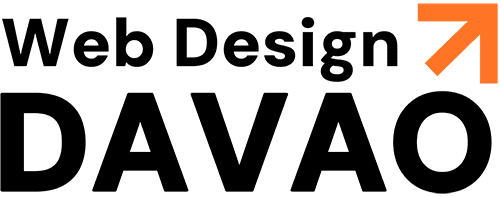Why SEO Matters in Today’s Digital World
In the fast-paced digital landscape, SEO (Search Engine Optimization) has become an essential tool for businesses and individuals looking to gain visibility online. Without it, your website could remain hidden in the depths of search engine results, unseen by the very audience you’re trying to reach. As the internet grows, so does competition for attention. Whether you’re an e-commerce giant or a small business owner, SEO is a vital strategy that ensures your content ranks high enough to be noticed.
Link building, an integral part of SEO, serves as a powerful technique for increasing a site’s authority and relevance in the eyes of search engines like Google. However, not all link-building strategies are created equal. They can fall into one of two categories: white hat and black hat SEO. Understanding the difference is crucial to the long-term success of your website.
The Role of Link Building in Boosting Website Authority
Link building is about creating a network of hyperlinks that point to your website. Search engines use these links as votes of confidence, indicating that your content is trustworthy and valuable. High-quality backlinks can significantly improve your website’s domain authority, leading to higher rankings in search engine results pages (SERPs).
But here’s the twist—while link building is a powerful strategy, it needs to be done the right way. Using manipulative tactics might give you a short-term boost, but it could also lead to penalties or a damaged reputation. Choosing the right approach will determine whether your website’s SEO success is sustainable or fleeting.
What Are White Hat and Black Hat SEO?
SEO strategies can generally be divided into two broad categories: white hat and black hat. White hat SEO focuses on ethical, sustainable practices that align with search engine guidelines, while black hat SEO relies on shortcuts and manipulative tactics to trick search engines into ranking content higher than it deserves. Each approach has its pros and cons, and understanding these differences is essential before diving into any link-building strategy.
Understanding White Hat SEO
What Is White Hat SEO? A Strategy Built on Ethics and Quality
White hat SEO refers to strategies that strictly adhere to search engine rules and guidelines, ensuring that every tactic used benefits both the user and the search engine. It focuses on providing real value to visitors through high-quality content, ethical link-building, and overall website optimization. Rather than trying to outsmart search engines, white hat SEO works in tandem with them to build a sustainable online presence.
The Core Principles of White Hat Link Building
The essence of white hat link building lies in authenticity and relevance. Here’s a quick rundown of its core principles:
- Quality over Quantity: Links from high-authority, reputable sites matter more than a vast number of low-quality links.
- Content Value: Links should come from content that is genuinely helpful, informative, and relevant to your audience.
- Natural Acquisition: Links should be earned through genuine relationships, content, or resources rather than bought or manipulated.
Benefits of White Hat SEO for Long-Term Growth
White hat SEO may not deliver instant results, but the long-term benefits far outweigh any quick wins from black hat tactics. These include:
- Sustained Rankings: Ethical practices ensure your website doesn’t risk penalties, resulting in more consistent rankings.
- Trustworthiness: Over time, your site builds credibility with both search engines and users, fostering trust.
- Stronger Relationships: White hat SEO emphasizes collaboration and partnership, which can open doors for future opportunities.
Diving Into Black Hat SEO
Defining Black Hat SEO: The Shortcut to Visibility
Black hat SEO is the practice of using deceptive or unethical tactics to boost a website’s ranking. This approach often ignores search engine guidelines, focusing instead on exploiting loopholes for immediate, short-term gains. While these tactics can be effective in the short run, they are fraught with risks that can harm a website’s long-term success.
Common Black Hat Link Building Techniques (And Why They’re Risky)
Here are some of the most common black hat link-building techniques that can result in severe penalties:
- Link Buying: Purchasing backlinks is a quick and tempting way to boost rankings, but search engines are adept at detecting paid links.
- Cloaking: This involves presenting different content to search engines and users in an attempt to deceive search algorithms.
- Spammy Commenting: Leaving irrelevant links in blog comments or forum posts is considered manipulative and generally leads to penalties.
The Dangers of Black Hat SEO: Penalties, Loss of Trust, and More
While black hat SEO may seem like a shortcut, it comes with significant dangers:
- Google Penalties: Websites caught using manipulative tactics risk getting penalized by Google, resulting in drops in rankings or even complete deindexing.
- Loss of Credibility: Visitors can quickly spot low-quality content or suspicious links, leading to a damaged reputation.
- Temporary Success, Lasting Damage: While black hat tactics might show quick results, they usually don’t last, and once penalties hit, recovery can be a lengthy and costly process.
Key Differences Between White Hat and Black Hat SEO
Ethical Practices vs. Manipulative Tactics
White hat SEO focuses on ethical, user-centered tactics, whereas black hat SEO relies on deception and manipulation to gain rankings. White hat SEO builds trust over time, while black hat SEO seeks shortcuts, often at the cost of long-term sustainability.
Short-Term Gains vs. Sustainable Results
Black hat methods may offer an initial surge in traffic, but white hat strategies lead to long-term growth and stability. Sustainable results are achieved through consistently delivering valuable, relevant content and engaging with your audience in meaningful ways.
Risk Levels: Playing by the Rules vs. Risking It All
Choosing black hat tactics is like playing with fire: you may get away with it for a while, but eventually, the risks will catch up. White hat strategies, on the other hand, are based on a foundation of trust and reliability, offering a lower-risk approach that pays off in the long run.
Popular White Hat Link Building Techniques
Guest Blogging: Building Relationships Through Quality Content
Guest blogging remains one of the most effective white hat strategies for building backlinks. By contributing valuable content to authoritative sites within your niche, you not only gain a link but also position yourself as a thought leader.
Resource Link Building: Becoming a Trusted Resource in Your Niche
This strategy involves securing links from resource pages, directories, or listicles that are relevant to your industry. It’s an excellent way to build credibility and trust, as these pages are often viewed as valuable resources by both users and search engines.
Content Outreach: Promoting High-Value Content for Natural Backlinks
Creating compelling, shareable content is one thing, but promoting it to the right audience is what truly makes it effective. Content outreach involves reaching out to relevant websites and influencers to promote your content and earn natural backlinks.
Common Black Hat Link Building Tactics to Avoid
Buying Links: Why It’s a Red Flag for Search Engines
Buying links is one of the most straightforward black hat tactics, but search engines are highly skilled at detecting these unnatural patterns. Purchased links do not carry the same weight as organic ones and can lead to penalties that undo all your hard work.
Private Blog Networks (PBNs): The Hidden Danger of Manipulated Links
PBNs are networks of websites created solely to link back to a target website, usually to manipulate rankings. While they may appear effective, they are a high-risk strategy that often leads to penalization when discovered.
Cloaking and Redirects: Tricks That Can Tank Your Rankings
Cloaking involves showing different content to search engines and users, while redirecting involves sending users to a different URL than the one originally linked. These tactics can deceive search engines, but they’re strictly against guidelines and can result in severe penalties.
How Search Engines Respond to White Hat vs. Black Hat SEO
Understanding Google’s Webmaster Guidelines
Google’s Webmaster Guidelines are the foundation of SEO best practices. They provide clear instructions on what is considered acceptable SEO behavior and what is not. Following these guidelines ensures that your SEO tactics align with Google’s expectations, leading to long-term success.
The Role of Algorithms in Identifying Manipulative Practices
Google’s algorithm continuously evolves to detect black hat tactics, penalizing sites that attempt to manipulate rankings. Algorithms like Penguin, for instance, specifically target manipulative link-building practices, ensuring that only sites following ethical practices thrive.
Case Studies: Websites That Paid the Price for Black Hat Strategies
Several high-profile websites have suffered the consequences of black hat SEO. From steep ranking drops to complete removal from search engines, these case studies serve as cautionary tales for anyone considering risky tactics.
The Grey Area: Are There Ethical Shortcuts?
Understanding Grey Hat SEO: The Middle Ground
Grey hat SEO exists in a blurry space between white and black hat tactics. While some grey hat techniques may skirt the edge of search engine guidelines, they are typically not as dangerous as black hat tactics. However, they still carry risks and should be approached with caution.
Risks of Walking the Line Between White and Black Hat
The main risk of grey hat SEO is that search engines may eventually penalize it as they continue to refine their algorithms. Using tactics that aren’t strictly against guidelines but still feel manipulative can hurt a website’s reputation in the long run.
When to Avoid “Quick Fixes” in SEO
Quick fixes and shortcuts may seem enticing, but in the world of SEO, they rarely lead to lasting success. Focusing on long-term, ethical strategies ensures that your website’s reputation and rankings grow organically, without the threat of penalties looming over you.
How to Choose the Right Link Building Approach
Evaluating Your Goals: Short-Term vs. Long-Term Success
Before diving into any link-building strategy, it’s essential to assess your goals. If you’re aiming for short-term traffic boosts, black hat tactics might seem tempting, but they come with high risks. For sustainable success, white hat strategies offer the most reliable path.
Assessing Your Risk Tolerance: What’s at Stake for Your Business?
Consider the potential consequences of using black hat tactics. Will your business be able to withstand the loss of trust and penalties that may come with manipulative practices? For most businesses, the risk is simply not worth it.
Aligning Link Building Strategies with Your Brand’s Values
Your link-building strategy should align with your brand’s values and mission. Building a reputation based on quality and integrity will set you apart from competitors and foster long-term trust with your audience.
Conclusion
Choosing white hat SEO is the smart, sustainable investment for any business looking to build a lasting online presence. By focusing on ethical link-building practices, you’ll create a solid foundation for long-term growth and success. At Web Design Davao, we specialize in implementing proven white hat SEO techniques to ensure your business thrives in a competitive digital landscape.
Contact Us to start building your future online success with ethical, effective SEO strategies. Let us guide you toward sustainable growth and visibility today!




